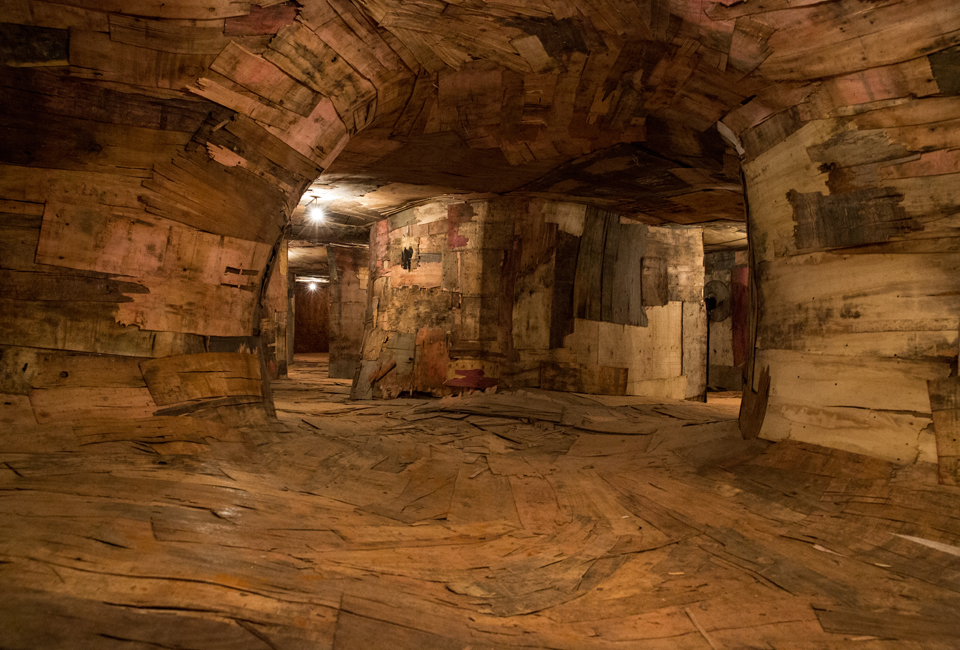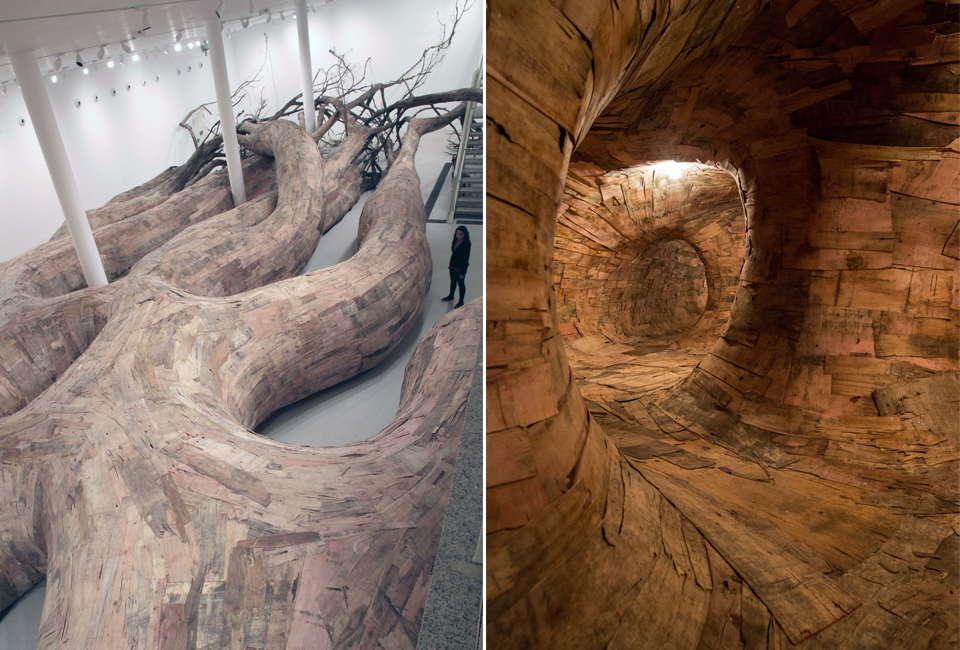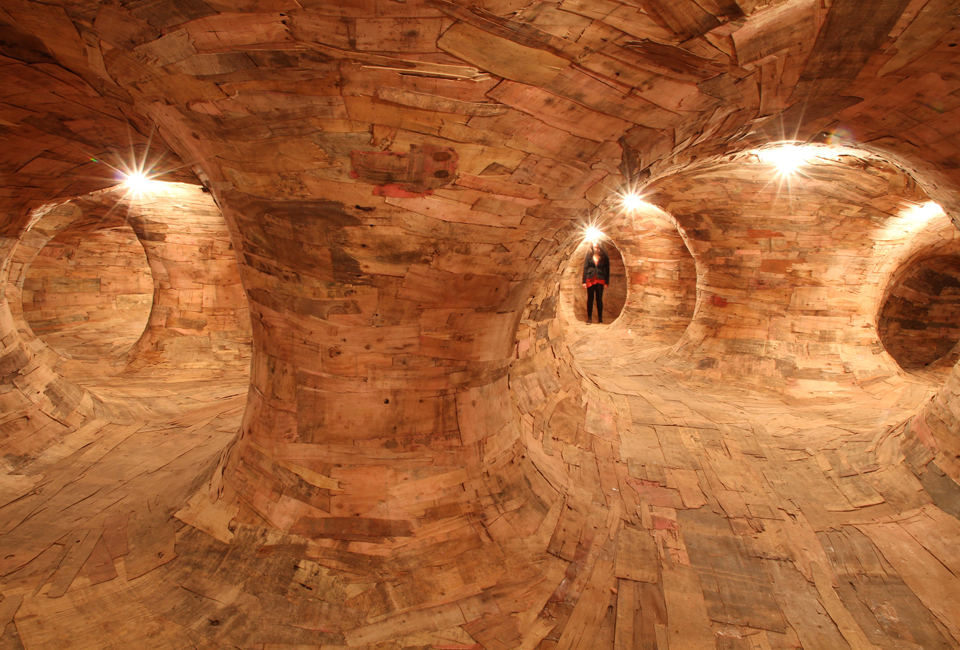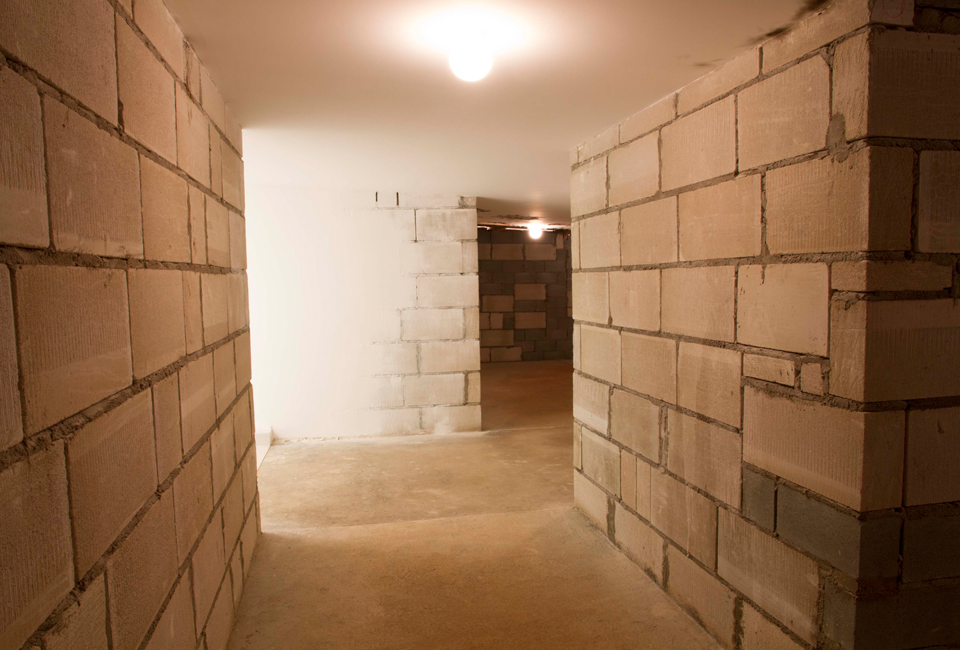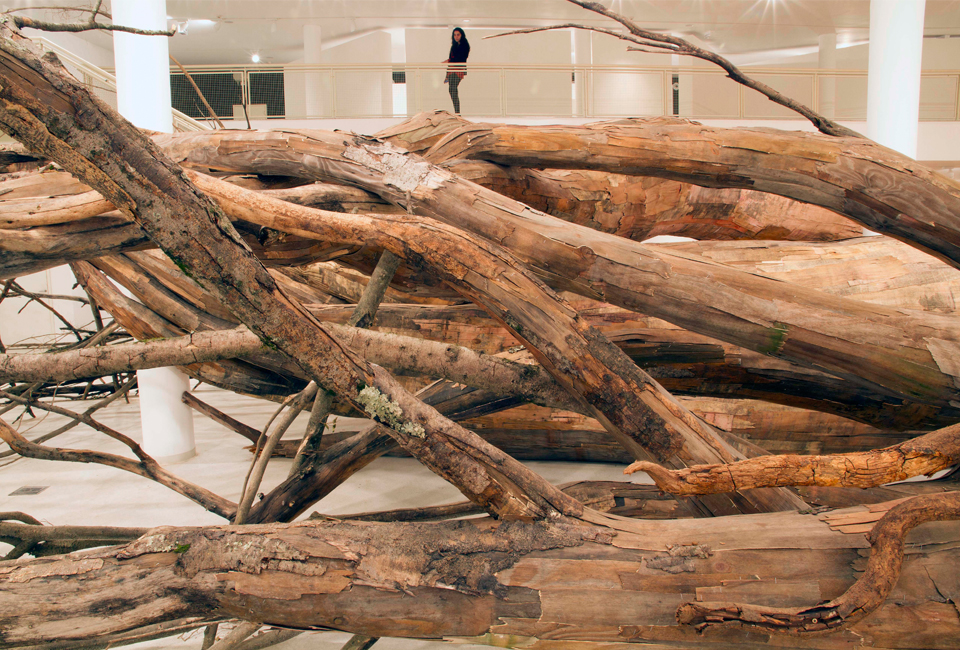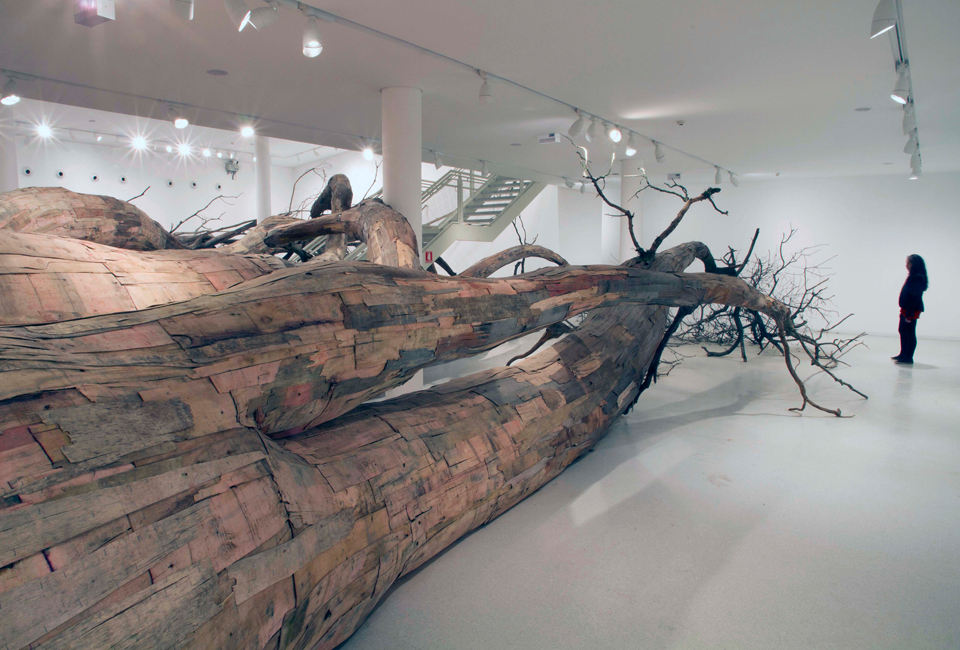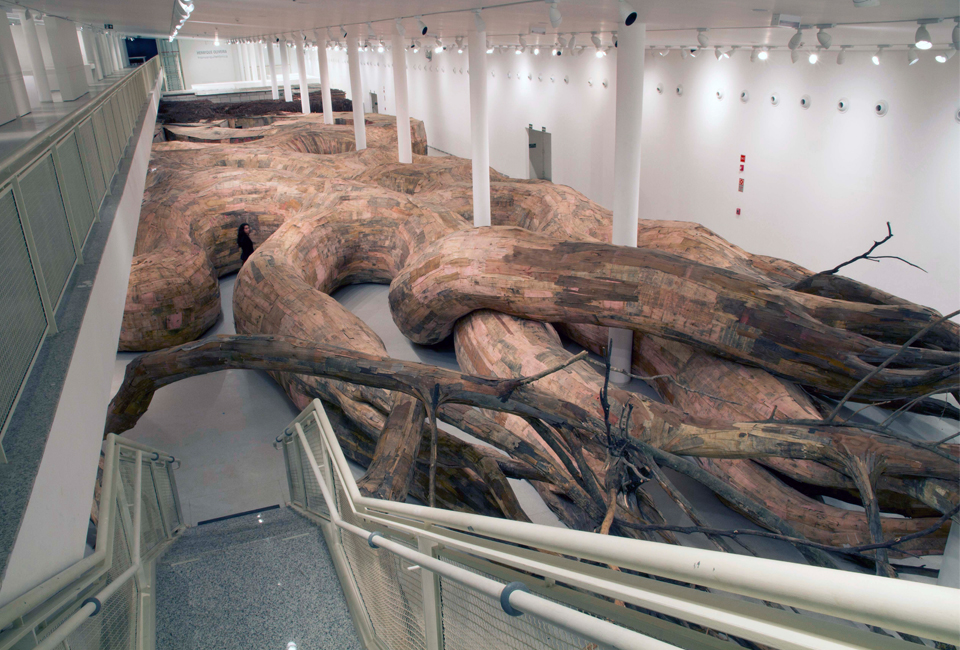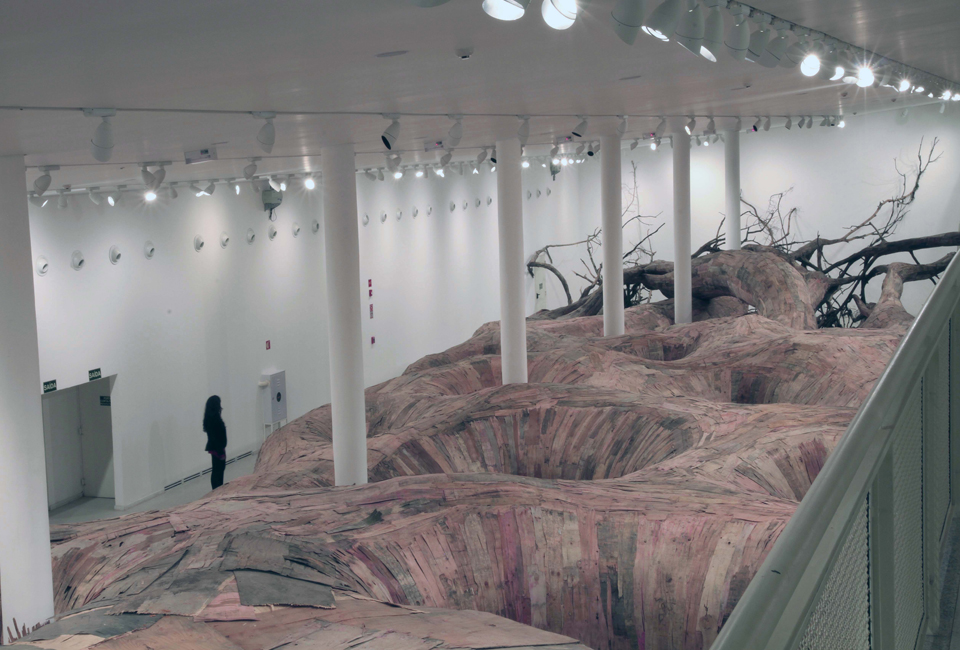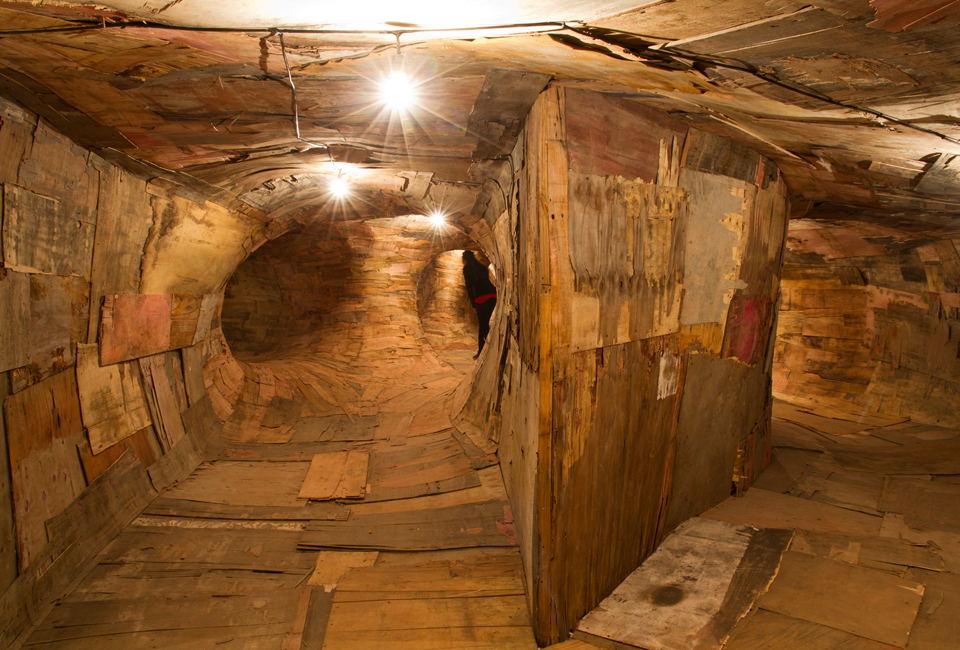When the Museum of Contemporary Art of the University of São Paulo invited Henrique Oliveira to create a work for the ground floor of the Original Annex of its New Building, the Institution was sure of Henrique’s ability to face the challenge of working in this beautiful place designed by Oscar Niemeyer, succeeding Carlito Carvalhosa’s intervention. Henrique Oliveira’s “spaces of crossing” would gain new connotations when conceived for a place so strongly tied to modern architecture, such as the Original Annex.
At first, it seemed that Henrique Oliveira ignored the building designed by Oscar Niemeyer when creating his intervention project for the place. His proposal is pensive and meanders the colonnade conceived by the architect as someone who swerves from an obstacle. Seen from the mezzanine, it seems that the intervention acknowledges the existence of the place proposed by Niemeyer, but ignores it and passes by it. However, the observations made in the previousparagraph are actually impressions, because the fact that this is an iconic building of modern architecture did strongly influence Henrique Oliveira’s project. So much so that, as everyone will notice, the artist did not create another space of passage, of crossing.
TRANSARQUITETÔNICA was not conceived only as that, but as a place, a work of architecture that includes painting and sculpture. By experiencing its several rooms and simultaneously receiving various stimuli that involve practically all his/her senses, the visitor is invited to reflect on the several transformations through which architecture has gone: from the modernist rationalism – which is the central feature of Oscar Niemeyer’s building where the piece is located – to the caves that sheltered men and women millenniums ago.
TRANSARQUITETÔNICA brings back the narrative dimension present in some (few) works previously created by Henrique Oliveira and, in a proportion that aims at the epic, re-‐proposes the merging of widely diverse artistic modalities. This installation by Henrique Oliveira definitely shows that art today can be everything it wants to be and must be, even when it is created based on its own images, which, as stated before, served as point of departure for his production as a whole, since his first paintings.
